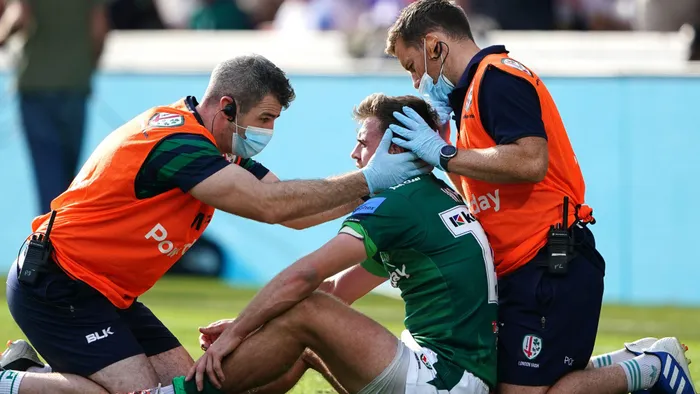Player welfare takes centre stage with World Rugby’s updated guidelines

World Rugby has introduced new guidelines limiting players to 30 games per season, mandating rest periods after internationals, and enforcing a five-week off-season to protect player welfare.
Image: AFP
World Rugby has announced new player load guidelines designed to protect athletes’ health and manage their workload across a season. The rules, agreed by the governing body’s executive board, were hailed as a “landmark moment” for the sport.
The guidelines, which cover elite men’s and women’s rugby globally, were recommended by a project group of experts representing players, unions, regions, and competitions.
Key limits and rest periods
Under the new rules:
- Players may play no more than 30 full games in a single season or six consecutive match weeks.
- A five-week off-season break is mandatory.
- Players selected for international fixtures are entitled to at least one week of rest.
- Across a year, players should have 12 weeks of non-contact training.
- Communication between clubs and national teams must be thorough to coordinate player workload.
“The most material impact we can have on player injury rates is through management of player load, specifically through managing match numbers and contact training,” said IRPA chief of rugby operations Conrad Smith.
Backed by science and experts
Chairman of World Rugby Dr Brett Robinson highlighted the evidence-based approach behind the guidelines:
“As with all World Rugby policies, these guidelines are informed by the latest science and expert opinion. Our hope, over time, is that unions and competitions reach local agreements to best serve the individual circumstances of players. In the meantime, these guidelines provide a solid backstop.
“As we grow our sport, players can be sure that they are being well supported by their clubs, unions and at the very top of the game by World Rugby.”
The guidelines are supported by leagues, unions, independent experts, and the International Rugby Players Association (IRPA). IRPA chief Omar Hassanein said:
“This is a landmark moment for rugby. These guidelines put player welfare and safety at the heart of the global game and ensure that athletes can perform at their best while protecting their long-term health.”
Smith added that previous efforts, such as targeting foul play and lowering the tackle height, had limited effect on concussion rates. The new rules aim to address player safety more effectively through workload management.
Condition for new competitions
Having the guidelines in place was a condition for World Rugby approving the new Nations Championship, scheduled to begin in summer 2026. The biennial men’s competition will feature 12 teams, including the Six Nations and SANZAAR sides.
“The guidelines are the result of much intense negotiation over many years. I’d like to congratulate all involved on achieving this agreement,” Robinson said.
Player Load Project Group
The guidelines were developed by the Player Load Project Group, whose full membership includes: Chair: Juian Piscone (FFR); Conrad Smith, Sharon Flahive, Rachel Burford, Danielle Salmon (IRPA); Ross Tucker, Steve Mellalieu, Des Ryan (Independent); Julie Paterson (Six Nations), Matt Cross (Prem Rugby), Sylvain Blanchard (LNR); Lesley McKenzie, Nick Gill, Andy Edwards, Juan Fernandez Lobbe, Kevin Rouet (Union coaches/High Performance Managers); Johan van Graan, Stuart Lancaster, John Dobson (Club coaches); Mark Harrington, Eanna Falvey, Lindsay Starling, Kevin Bouwer (World Rugby)
Broader context: evolving the game
World Rugby continues to explore ways to make rugby more dynamic and fan-friendly through its “Shape of the Game” forum. Areas of focus include speeding up play, simplifying rules, increasing the profile of women’s rugby, and improving disciplinary processes.
“Shape of the Game 2024 represents an important milestone in defining the future of our sport,” said World Rugby chairman Sir Bill Beaumont. “It is fantastic to see such a strong desire from all stakeholders – players, coaches, match officials, competition owners, unions and regions – to evolve the game to set us up for success, not just at the elite level, but at the community game.”
Related Topics: